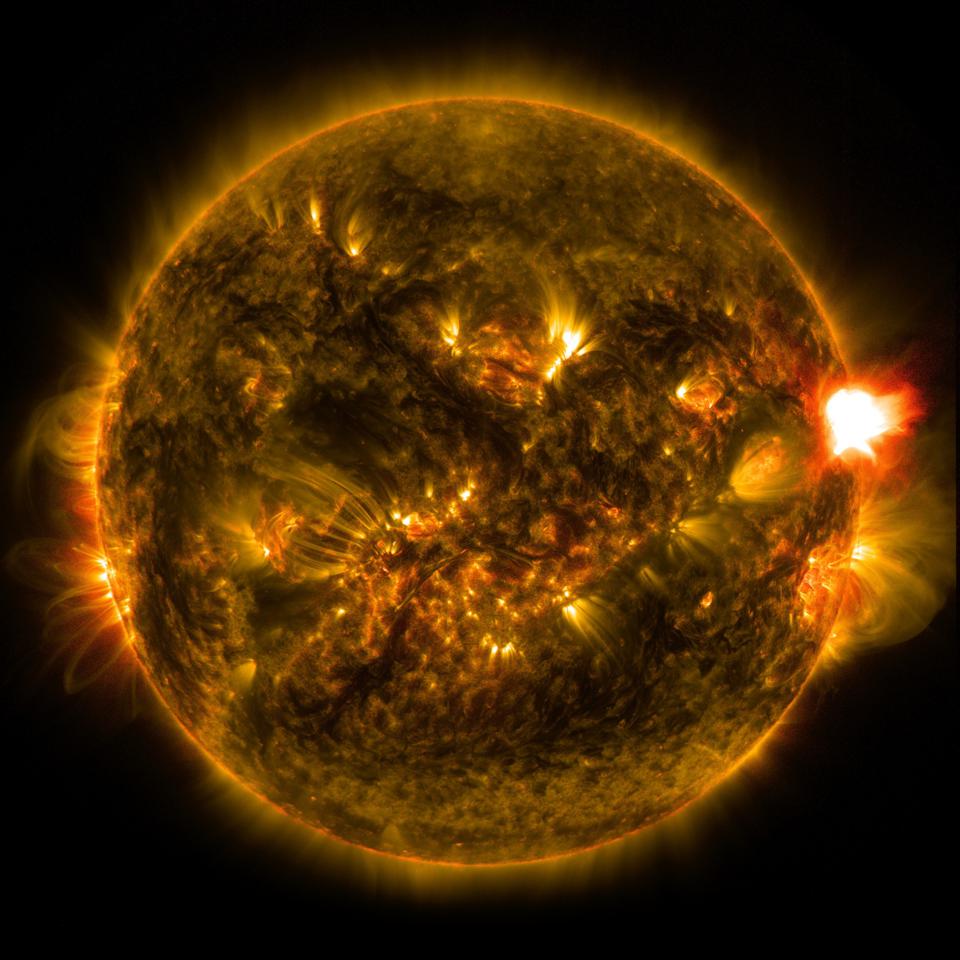
Whereas we are dominated by the magnetic field created in our planet’s metallic core, the sun’s field is generated just beneath the surface.
When these magnetic reconnection events occur, they can lead not only to rapid changes in the strength and direction of the field near the sun, but also the rapid acceleration of charged particles.
This can lead to the emission of solar flares, as well as — if the sun’s corona gets involved — coronal mass ejections.
Solar flares and coronal mass ejections consist of fast-moving charged particles from the sun: largely protons and other atomic nuclei.
Normally, the sun emits a constant stream of these particles, known as the solar wind.
However, these space weather events — in the form of solar flares and coronal mass ejections — can not only greatly enhance the density of charged particles that get sent out from the sun, but their speed and energy as well.
Solar flares and coronal mass ejections, when they occur, often happen along the sun’s central and mid-latitudes, and only rarely around the polar areas.Whether from a solar flare or a coronal mass ejection, however, a slew of charged particles headed towards Earth doesn’t automatically mean disaster.While we can look at the sun remotely, gaining estimates for when flares and coronal mass ejections could be potentially hazardous to Earth, we’ve been relying on incomplete data.
Only by measuring the magnetic fields of the charged particles traveling from the sun to Earth — and comparing them with the orientation of Earth’s magnetic field at that particular moment — can we know whether such an event would have a potentially catastrophic impact on our planet.
In particular, it allows us to measure the magnetic field in all three of the sun’s observable layers: photosphere, chromosphere, and throughout the solar corona.
Armed with this information, we can know with great confidence what the orientation of a coronal mass ejection’s magnetic field is from the moment it’s emitted, and can then easily determine what sort of danger that ejected material poses to Earth.
Even for a Carrington-like event, which traveled approximately five times as fast as typical coronal mass ejections, we’d still have ~17 hours of warning — far more than what we had prior to Inouye’s first unveiling in 2020.
Under normal circumstances, the sun emits charged particles, and occasionally, magnetic events drive the release of flares and, more uncommonly, coronal mass ejections.
Even if they do hit the Earth, our planet’s magnetic field will funnel them away harmlessly, unless the magnetic fields are serendipitously (anti-)aligned.
Similar to the Carrington event, the particles traveled from the sun to the Earth in just 17 hours.
